Teaching Young People about Foodprints
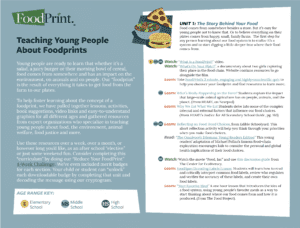
Young people are ready to learn that whether it’s a salad, a juicy burger or their morning bowl of cereal, food comes from somewhere and has an impact on the environment, on animals and on people. Our “foodprint” is the result of everything it takes to get food from the farm to our plates. But it doesn’t take much to learn a little bit more about where our food comes from and how it got to us, or to learn how to choose products and practices that do less harm to the environment, animals and people.
To help foster learning about the concept of a foodprint, we have pulled together lessons, activities, book suggestions, video links and easy-to-understand graphics for all different ages and gathered from expert organizations who specialize in teaching young people about food, the environment, animal welfare, food justice and more.
Use these resources over a week, over a month or over however long you’d like, as an after school “elective” or just some weekend fun. Consider completing this “curriculum” by doing our “Reduce Your FoodPrint” 4-Week Challenge. We’ve even included merit badges for each section. Your child or student can “unlock” each downloadable badge by completing that unit and decoding the message using our cryptogram.
Get Started
Ready to start learning about foodprints? Take a look at an introduction to each unit below and be sure to download the full set of resources including book recommendations, movies to watch, activities to complete and much more.
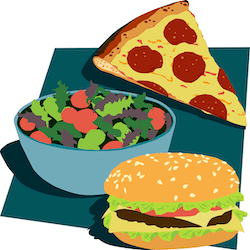
UNIT 1: The Story Behind Your Food: What’s a “FoodPrint”?
Food comes from somewhere besides a store. But it’s easy for young people not to know that. Or to believe everything on their plates comes from happy, small, family farms. The first step for any person learning about our food system is to realize it’s a system and to start digging a little deeper into where their food comes from.
Dig deeper into this unit with resources from The Edible Schoolyard, The Center for Ecoliteracy and FoodPrint’s own Find Your FoodPrint quiz. Download the full set of resources above.
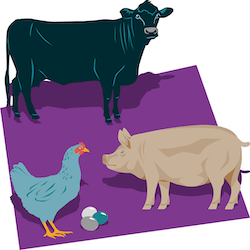
UNIT 2: Animal Welfare
The main way in which we produce meat, eggs and other animal products has turned animals into units of production in a factory. Animals in so-called “factory farms” are treated terribly, subject to awful living conditions and cruel deaths.
Resources in this unit include tips for going meatless on Mondays, a video on factory farming, lessons from HEART and more. Download the full set of resources above.
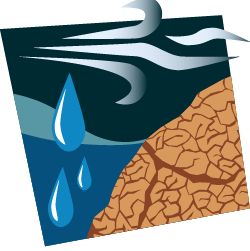
UNIT 3: Environmental Impacts of the Industrial Food System
Industrial food production takes a tremendous toll on our soil, air and water and is a driver of climate change.
Resources for this unit include an interactive guide for understanding food and climate change and an in-depth lesson plan and activity from Farm Sanctuary. Download the full set of resources above.
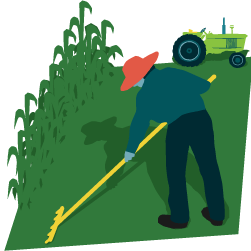
UNIT 4: Who Makes Your Food?
The production of most of our food, from fruits and vegetables to meat and eggs, relies on human labor. The work is hard and largely underpaid and undervalued.
Learn more with the resources for Unit 4, including StoryCorps and Real Food Media audio segments, a short paper by FoodPrint on Labor and Workers in the Food System and more. Download the full set of resources above.
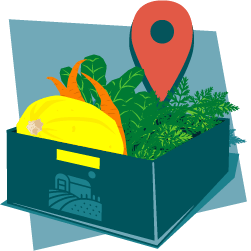
UNIT 5: The Importance of Local Food
Food that is produced locally has a smaller foodprint. Purchasing locally-grown food helps support local farms — and therefore the local economy — and maintains farmland and open spaces in your community. This unit also includes information about growing your own food.
Activities and resources for this unit include a trip to your local u-pick farm, a Seasonal, Local Food Lesson from Nourish and more. Download the full set of resources above.
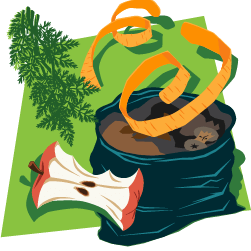
UNIT 6: Food Waste
America wastes roughly 40 percent of its food. Of the estimated 125 to 160 billion pounds of food that goes to waste every year, much of it is perfectly edible and nutritious. Some is lost on the farm, some is lost in transportation, some in restaurants— but a whole lot is also wasted at home.
Learn how to complete a waste audit and explore strategies to reduce food waste as a part of the resources included in this unit. Download the full set of resources above.
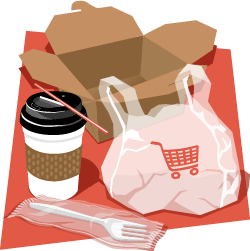
UNIT 7: Food Packaging
As our landfills and waterways are increasingly clogged with single-use plastic packaging like plastic bags, Styrofoam food containers, disposable coffee cups and more, it’s clear that the convenience of food packaging is outweighed by the waste and pollution that the packaging leaves behind.
Resources for this unit include a data visualization from Reuter’s plus several reports, short stories and books to read. Download the full set of resources above.
Top photo by arrowsmith2/ AdobeStock.
More Reading
In a beefy moment, beans?
November 4, 2025
Can extended producer responsibility programs push food companies to use sustainable packaging?
October 16, 2025
The meat industry smeared the Planetary Health Diet. Now its creators are back with more evidence.
October 10, 2025
The latest Global Plastics Treaty talks failed. Where does that leave the plastic pollution crisis?
September 23, 2025
For these cocoa farmers, sustainability and the price of beans are linked
September 17, 2025
This fall, get involved in one of these campus sustainability initiatives
August 26, 2025
What we’re reading this summer
July 17, 2025
A new book says tech-supported industrial ag will feed the world. Agroecologists would like a word.
July 9, 2025
Use a grocery store trip to teach kids environmental stewardship
July 7, 2025
Can rye growers get consumers and retailers excited about rye?
May 19, 2025
